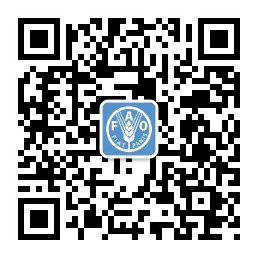AGROVOC Editors from many countries convene at KTBL in Darmstadt
AGROVOC meeting participants, Darmstadt 24 June 2019
As a follow-up to last year's successful AGROVOC Editors' meeting in Utrecht, thirty-three editors and stakeholders from 16 countries and 13 language areas met on June 24-25 2019 at the German Association for Technology and Structures in Agriculture (KTBL) in Darmstadt, Germany. AGROVOC is a multilingual thesaurus and controlled vocabulary covering all areas of interest of FAO including food, nutrition, agriculture, fisheries, forestry, and environment, available up to 33 languages. In June 2019, AGROVOC had 36,288 concepts and 732,283 terms.
The meeting began with a report on the status of AGROVOC and its growth over the past year. Discussion then turned to topics related to editorial policy: the use of common versus scientific names, the use of custom semantic relations from Agrontology, and differences of editorial policy between languages.
The AGROVOC team introduced "multischeme", a new feature of the AGROVOC editorial platform, VocBench 3. This feature allows editors to maintain a subset of AGROVOC concepts as a distinct subscheme within AGROVOC and with its own customized, project-specific hierarchy. Any given AGROVOC concept may be embedded in the hierarchies in multiple subschemes without affecting the hierarchical structure of AGROVOC as a whole. These distinct subschemes AGROVOC can be exported from VocBench as normal SKOS concept schemes for use or display by SKOS-enabled applications.
Multischeme capability enables expert communities to enrich AGROVOC with new concepts while building their own specialized concept schemes. For example, the Fisheries department at FAO has moved the vocabulary of the Aquatic Sciences and Fisheries Abstracts (ASFA) thesaurus into VocBench and begun the process of mapping its 6,551 concepts to the larger and more hierarchical AGROVOC. A global community of experts on land governance has begun maintaining LandVoc, a controlled vocabulary about land ownership and use, as an independent subscheme within AGROVOC.
Presentations were made about the use of AGROVOC at a soil research institute (Bonares/ZALF, Germany); at AGRIS centers in Thailand (Kasetsart University, Thailand) and Russia (CSAL, Russia); and in an innovation platform for smallholders (GAK - St. Stephen University, Hungary). Editors raised issues related to topic coverage in AGROVOC and to the curation of AGROVOC in German (KTBL, Germany), Turkish (Ministry of Agriculture and Forestry, Turkey), French (CIRAD and INRA, France), Moldovan (State Agrarian University, Moldova), Portuguese (EMBRAPA, Brazil), and Ukrainian. Other issues raised included capacity development on the use and maintenance of controlled vocabularies and a need for semi-automated tools to help information providers tag their resources with concepts from AGROVOC.
Other large-scale concept schemes represented at the meeting included the Chinese Agricultural Thesaurus (CAAS, China), the National Agricultural Library Thesaurus (USDA, USA), the CAB Thesaurus (CABI, UK), Global Agricultural Concept Space (CABI, UK), and EuroVoc (Publications Office of the EU, Luxembourg). discussed mappings to AGROVOC and offered insights into how their teams approached various of the issues facing the editors of AGROVOC.
The meeting resolved to form an Editorial Task Force to continue discussion of editorial policy, propose solutions for approval by the broader community, and revise the official AGROVOC editorial guidelines, also with a multilingual focus. An upcoming report to the AGROVOC community will include a more detailed summary of the issues discussed in Darmstadt.


